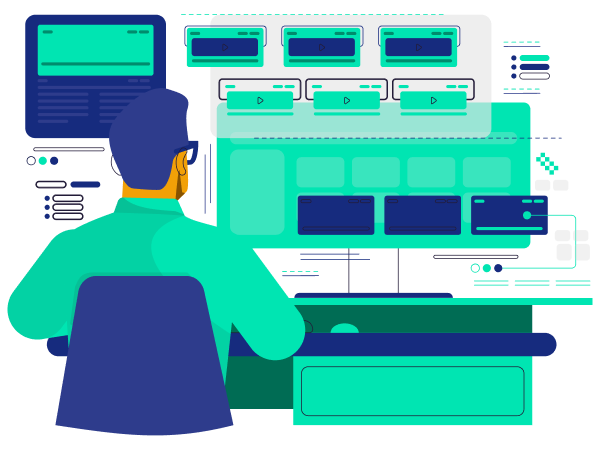12 things that will transform you into a Smart MSP
By Andy Venables
Published on July 19, 2021

Digital transformation initiatives are being brought forward and driven harder as more economic activity moves online - and this is especially true for ICT managed services. The incentives to transform are significant, such that business owners and investors are implementing change to future proof and grow their companies.
The rewards on offer for those that get it right can be significant but what does it actually mean to become a Smart MSP? This may be subject to interpretation, so we have attempted to provide specific guidance on what makes the difference.
Here's our list of 12 transformational changes that will give your Smart MSP a competitive advantage:
- 1. CMDB driven monitoring. Configuring monitoring can be an eternal and overbearing drain on an MSP’s resources, one that often goes unseen. Many MSPs have a plethora of Monitoring systems and keeping them all in sync can require a serious amount of engineering time that could be spent serving customers. However, if your monitoring is driven from the CMDB, this means each element of the customer's service is automatically monitored.
- 2. Multichannel customer service. All too often phone and email dominate the customer service channels, these are no longer the customer’s preferred method of communication but regularly are the only avenues available. A Smart MSP leverages technology to offer Web/Portal, Chat, Social Media and Chatbots as proactive channels, alongside email and phone.
- 3. Automated service reports. Generation of service reports can be a costly and time consuming process, but one that most customers will expect on a monthly basis. A Smart MSP leverages automation to collect and collate all of the report data from the various operational support systems and may provide contextual analysis through Artificial Intelligence.
- 4. Portal. The Smart MSP’s portal must be self-service and e-commerce enabled and full to the brim with features, content and transparent information for customers and partners alike. It should be the default method of interaction for customers and contain in-demand features like Knowledgebase, Service Catalog, Communities, Monitoring, Chatbots, Reporting, Billing and Service Dashboards to have them returning for visit after visit.
- 5. Self-service Service Catalog. Many of the requests an MSP receives on a daily basis can and must be automated. Having a robust and flexible framework to accept these requests and automate their fulfilment not only drives efficiencies but delights customers, allowing them to instantly see pricing and purchasing options for all the products and services available to them.
- 6. Diagnostics Tool. Many service issues faced by MSPs and their customers can be auto detected. Support and engineering teams have a mixture of these tools available to them. Many of the diagnostic tests performed as part of initial triage can be automated, so that proactive and reactive issues can be pinpointed in advance of an engineer beginning work. A Smart MSP goes further, and makes these tools available to customers via self-service options on the portal.
- 7. Automated CMDB and asset population. Keeping track of an MSP’s assets and their configuration is a foundation to nearly all other aspects of being a Smart MSP. It’s also a critical prerequisite to driving automation.
- 8. Provisioning (and de-provisioning) processes. Turning on a new service for a customer is a key process for an MSP and automation should be ingrained throughout. Where possible, the full end-to-end processes should be fully automated, making them zero-touch. Likewise, the de-provisioning process, often neglected, should be clearly mapped out and automated if possible, ensuring resources are promptly reclaimed.
- 9. Automated maintenance assessments and notification. Any MSP will have a variety of backhaul suppliers that will regularly perform maintenance. This, coupled with an MSP’s own upgrades, means the customer services team will suffer some disruption. Managing this efficiently requires the capability of quickly and clearly identifying any service disruptions and instantly seeing precisely which customers will be affected. Automating this process, as well as auto-notifying those customers of any service disruption, will only improve efficiency, accuracy and build trust.
- 10. eBonding and integrations to suppliers and customers. eBonding tickets with suppliers is a basic necessity to maximise the efficiencies of internal support teams, and free them to focus more of their time assisting customers. Many customers themselves will also expect to be able to eBond with the MSP, through APIs, to raise and manage tickets.
- 11. Service Assurance Workflows, Playbooks and Guided Decisions. Having a central platform for Operational Support is key to layering in automation and business process management. This platform should be capable of driving predefined workflows for common service requests and have run books for automating some tasks.
- 12. Customer Central. Any Smart MSP knows that some of their customers will be VIP, others will be in special measures, more still will have inflight projects. A customer central dashboard, tailored for each customer, puts all the information at the MSP’s fingertips to give a differentiated level of service and helps customers feel valued.
All of the above Smart MSP features, and many more, are available in our MSP Platform. Talk to us today and find out how POPX can enable you to transform to a Smart MSP.
